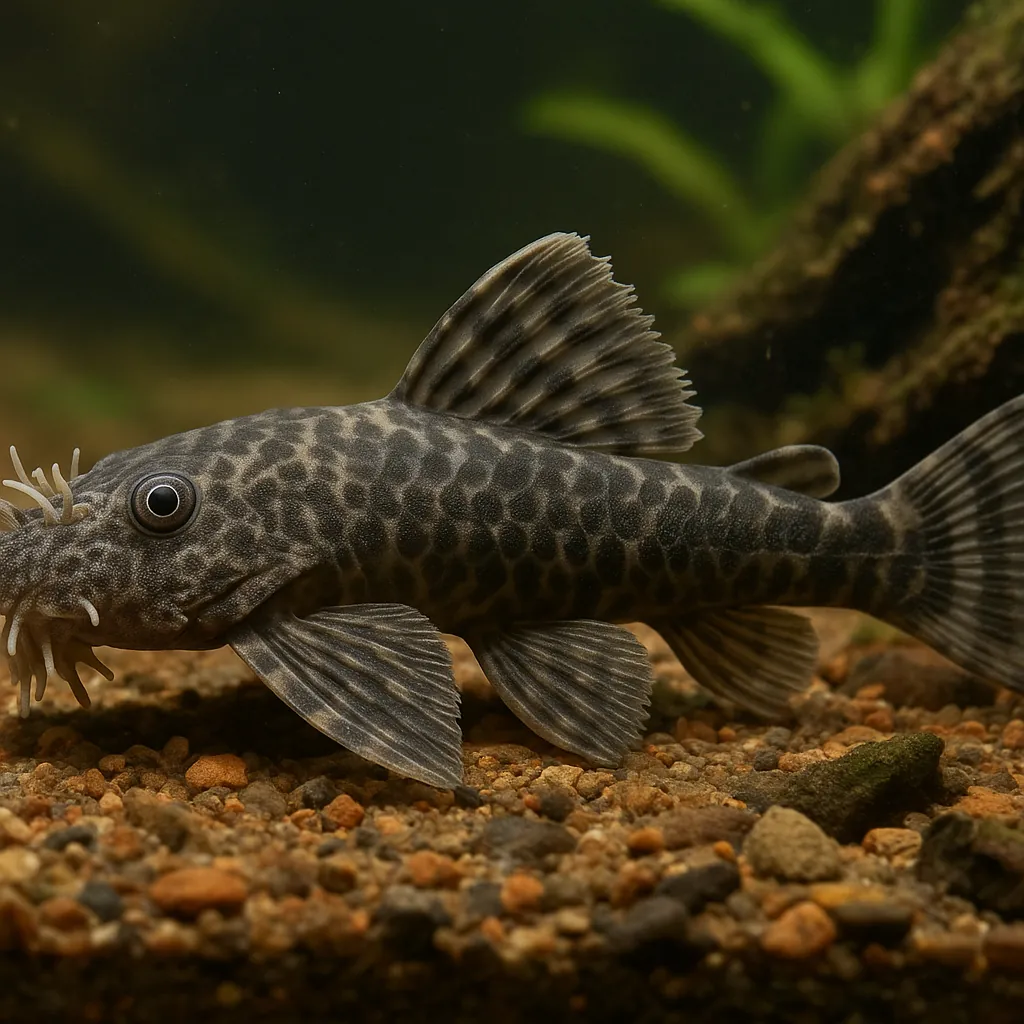
Medusa pleco
Introduction
The Medusa Pleco (Ancistrus ranunculus), also known as L034, is a captivating freshwater fish cherished by aquarists for its unique appearance and beneficial algae-eating habits. Its distinctive bristle-like tentacles on the head, especially prominent in males, give it a "medusa-like" look, adding intrigue to any aquarium. While generally hardy, the Medusa Pleco requires specific care to thrive, making it suitable for aquarists with some experience.
What makes the Medusa Pleco stand out in an aquarium?
Its unique head bristles and nocturnal behavior add both visual interest and functional algae control to the tank.
Is the Medusa Pleco suitable for beginners?
Due to its specific environmental and dietary needs, it's better suited for aquarists with some experience.
Care and Environment
Proper care for the Medusa Pleco involves replicating its natural habitat and meeting its dietary requirements.
What is the minimum tank size for a Medusa Pleco?
A minimum of 150 liters is recommended for a single Medusa Pleco, with larger tanks needed for multiple specimens.
What are the ideal water parameters for this species?
Maintain temperatures between 24°C and 28°C, pH levels of 6.0 to 7.5, and water hardness between 5 to 15 dGH.
How should the tank be set up to accommodate a Medusa Pleco?
Provide a soft, sandy substrate with ample hiding spots using driftwood, caves, and smooth rocks to mimic their natural environment.
What kind of filtration and lighting does the Medusa Pleco require?
Strong filtration and water movement are essential to replicate their native fast-flowing rivers. Dim lighting is preferred, as they are nocturnal and shy.
What should be included in their diet?
Offer a balanced diet of algae wafers, sinking pellets, blanched vegetables like zucchini and spinach, and occasional protein-based foods such as bloodworms or brine shrimp.
Are there any specific challenges in keeping Medusa Plecos?
They can be sensitive to water quality and may exhibit territorial behavior, especially among males. Providing adequate space and hiding spots can help mitigate aggression.
Origin and Habitat
The Medusa Pleco is native to the fast-flowing, rocky rivers of South America, particularly the Rio Xingu and Rio Tocantins basins in Brazil. These environments are characterized by clear, oxygen-rich waters with strong currents. The riverbeds are typically composed of rocks and submerged wood, providing ample hiding spots. Seasonal variations can affect water flow and temperature, influencing their natural behaviors.
Where is the Medusa Pleco originally from?
It originates from the Rio Xingu and Rio Tocantins basins in Brazil.
What type of environment does it inhabit in the wild?
It thrives in fast-flowing, clear, and oxygen-rich rivers with rocky substrates and submerged wood.
Temperament and Compatibility
The Medusa Pleco is generally peaceful but can display territorial behavior, especially among males or towards other bottom-dwelling species. They are nocturnal and prefer to stay hidden during the day, becoming more active at night.
Is the Medusa Pleco aggressive?
While mostly peaceful, males can be territorial, particularly during breeding seasons.
What are suitable tank mates for a Medusa Pleco?
Compatible tank mates include peaceful, mid-to-upper level species such as tetras, rasboras, and small cichlids. Avoid housing them with other plecos or aggressive bottom dwellers to prevent territorial disputes.
How can aggression be minimized in the tank?
Providing ample hiding spots and ensuring sufficient space can help reduce territorial behavior.
Interesting Facts
The Medusa Pleco's unique head bristles are more pronounced in males and are believed to play a role in territorial displays and mating rituals. Unlike many other pleco species, they have a higher preference for protein-rich foods, making their dietary needs distinct. Breeding in captivity is challenging due to their specific environmental requirements, but successful spawning has been reported in well-maintained tanks with appropriate cave structures.
Why is it called the Medusa Pleco?
The name comes from the bristle-like tentacles on its head, resembling the mythical Medusa's hair.
Do Medusa Plecos eat only algae?
No, they prefer a diet that includes both plant-based foods and protein-rich items like bloodworms.
Is breeding Medusa Plecos in captivity common?
Breeding is considered difficult and is rarely achieved in home aquariums.
Sources
All information in this article has been gathered from the following reputable sources:
Overview
Recommended Tank Size 52.8 Gallons (for a pair) |
Minimum Group Size 1 |
Minimum Tank Volume 39.6 Gallons |
Maximum Adult Length 5.5 inches |
Average Adult Length 4.7 inches |
Shoaling (6+ required) No |
Preferred Water Type Freshwater, soft, slightly acidic to neutral |
Temperature Range (°C) 24–28 |
pH Range 6.0–7.5 |
Water Hardness (dGH) 5–15 |
Typical Lifespan (years) 5 years |